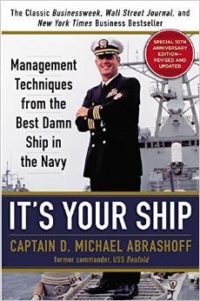UK To Remove Andrew From Role As Royal Navy Vice Admiral
LONDON, Nov 2 (Reuters) – Britain’s former prince Andrew is due to be stripped of his last remaining military position as part of King Charles’ decision to remove his brother from public...

Chairman of the Joint Chiefs of Staff Gen. Joseph F. Dunford receives a demonstration of the submarine training from students of the Trident Training Facility at Naval Submarine Base, Kings Bay, Georgia, photo by D. Myles Cullen
By Jim Garamone (DoD News) Impressive is the only word I can come up with to describe my impressions of the Naval Submarine Base at Kings Bay, Georgia.
I accompanied Marine Corps Gen. Joe Dunford, the chairman of the Joint Chiefs of Staff, as he visited sailors and toured the facilities at the base on the Georgia-Florida border.

I have to admit that I haven’t really spent a lot of time with submariners, even though my brother, Paul, served aboard a Polaris missile submarine in the 1960s. Before the visit, my impressions were formed by too many World War II submarine movies and Hunt for Red October.
Reality was far better than anything Hollywood could dream up.
Dunford went to Kings Bay to study one leg of the U.S. nuclear triad. The triad consists of intercontinental ballistic missiles, manned bombers and submarine-launched ballistic missiles. The nuclear triad has been at the heart of U.S. deterrence since World War II. The Trident missile armed ballistic missile submarines are “deterrence afloat,” one sailor said.
I can see that.
Each Ohio-class submarine carries 24 missiles. Each missile has multiple independent reentry vehicles — meaning they are tipped with thermonuclear warheads. Each warhead could vaporize a city.
Maintaining this deterrent is an awesome responsibility, and must be done perfectly. You don’t take shortcuts in working with thermonuclear weapons, and the sailors at the base never take them lightly.
During his visit, Dunford toured the USS Alaska – an Ohio-class submarine launched in 1986. The “boat” — yes, that’s what the Navy calls a submarine — is 560-feet long, 42-feet wide and has a draft of 38 feet. Most of it is under the surface.
The boat itself is under cover inside “the barn” — a huge structure with cranes and offices and machine shops built over the submarine’s docking space.
I won’t even describe the process it takes to go through security to get to the sub. It is enough to say that it was the first time in more than 40 years of covering the Defense Department that I felt someone would really shoot me if I pulled out an iPhone. There was no messing with the Navy security personnel.
You go down a spiral staircase to enter the boat. Once inside, it is like you have entered a machine shop. Pipes, electric lines, gauges, hatches and all sorts of unknown machines are crammed into the hull. The only familiar thing I saw when I entered the boat was a treadmill. “We try to stay in shape when we are on patrol,” our guide told me. The treadmill was sort of tucked away amid some unidentifiable machines. I have no idea how you would actually use the running machine underway.
Walking down the passageways is an experience. I’m sure the sailors have no problems negotiating these things, but as a fat, old guy, I had trouble. If someone was coming my way, I just plastered myself up against the side of the hall and held my breath. I asked where the 155-man crew lived and our guide said “around the machinery.”
He pulled back a curtain to show us a closet-sized room. There were nine bunks in the space. Each sailor had a small space under the bunk to store gear, and there was a small set of cabinets where I suppose you could put one shoe.
The galley feeds 155 sailors and is pretty good, said the guide, but there isn’t enough room to swing a cat.
They showed us the torpedo room, we went up and down ladders to get to the various decks and they gave us enough of a tour for me to realize just how tough the life aboard one of these boats. We didn’t see the control room or the reactor for security reasons, although Dunford did watch as the crew went through a classified drill in preparation for their next patrol.
And that patrol can last for three months. “We make our own oxygen, we distill our own water, we have a nuclear reactor that generates power and moves the boat,” said a senior chief. “The only limiting factor is food for the crew.”
The longest patrol the senior chief had been on was 87 days “sun to sun.” A master chief said his longest patrol was 109 days. I would imagine you’d get to know your fellow sailors pretty well on this kind of a schedule. And you better get along with them.
The USS Alaska bills itself as “Kodiak Strong” and these young sailors look it. They are bright, adaptable and tough. They shoulder an enormous mission for the United States, and they have to be perfect in that mission.
The sailors doing this mission are impressive, if out of sight. The submarine service is also called the Silent Service. It is that line of defense no enemy would want to cross. “I hope we don’t ever need them, but if we do, these guys are ready,” Dunford told the press traveling with him.

Sign up for gCaptain’s newsletter and never miss an update

Subscribe to gCaptain Daily and stay informed with the latest global maritime and offshore news
Essential news coupled with the finest maritime content sourced from across the globe.
Sign Up